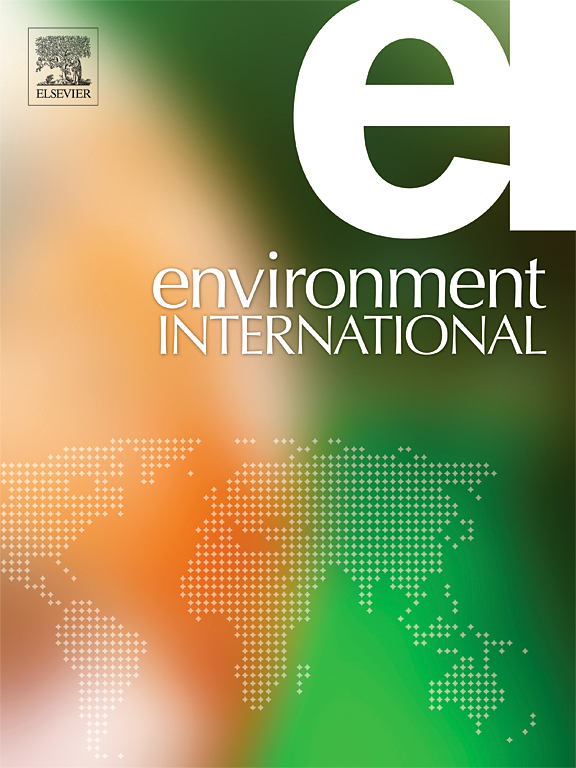暴露在“永久化学”全氟辛酸中,通过激活小鼠的下丘脑轴,诱发了类似抑郁的行为
IF 9.7
1区 环境科学与生态学
Q1 ENVIRONMENTAL SCIENCES
引用次数: 0
摘要
全氟辛酸(PFOA)是一种环境内分泌干扰物,已发现可增加室旁核(PVN)中促肾上腺皮质激素释放因子(CRF)的表达。在这项研究中,成年雄性小鼠通过灌胃给PFOA (p.o.)来评估它是否会破坏与情绪障碍相关的系统。连续10天暴露于PFOA(5 mg/kg)可引起雄性小鼠抑郁样行为。我们测量了pfoa暴露小鼠血清和海马中皮质酮的增加,这与PVN中测量的CRF表达增强有关。皮质酮升高与海马内糖皮质激素受体(GR)蛋白表达减少有关。将CRFR1拮抗剂注射到PVN和脑室内(icv)GR拮抗剂分别减少了抑郁样行为。此外,pfoa暴露小鼠nmda依赖性谢弗侧枝- ca3突触传递被破坏。突触缺陷可以通过CRFR1或GR拮抗剂来纠正。综上所述,我们发现雄性小鼠暴露于PFOA会增强CRF表达,然后激活HPA轴,破坏海马中的GR表达,导致抑郁样行为。这些数据与了解全氟辛酸对健康的潜在有害影响有关。本文章由计算机程序翻译,如有差异,请以英文原文为准。
Exposure to “Forever Chemical” perfluorooctanoic acid induces depression-like behaviors in mice by activating the HPA axis
Perfluorooctanoic acid (PFOA), an environmental endocrine disruptor, has been found to increase the expression of corticotropin-releasing factor (CRF) in the paraventricular nucleus (PVN). In this study, adult male mice were given PFOA by oral gavage (p.o.) to evaluate whether it disrupts systems related to mood disorders. PFOA exposure (5 mg/kg) for 10 consecutive days caused depression-like behaviors in male mice. We measured increased corticosterone in serum and in the hippocampus of PFOA-exposed mice, which were linked to enhanced CRF expression measured in the PVN. Elevated corticosterone was associated with reductions in glucocorticoid receptor (GR) protein expression within the hippocampus. CRFR1 antagonist injected into the PVN and intracerebroventricular (i.c.v.) GR antagonist both reduced depression-like behaviors, respectively. In addition, NMDA-dependent Schaeffer collateral-CA3 synaptic transmission in PFOA-exposed mice was disrupted. Synaptic deficits could be corrected by either CRFR1 or GR antagonists. In summary, we found exposure of male mice to PFOA enhances CRF expression, which then activates the HPA axis to disrupt GR expression in the hippocampus, leading to depression-like behaviors. This data is relevant for understanding the potential harmful health effects of PFOA.
求助全文
通过发布文献求助,成功后即可免费获取论文全文。
去求助
来源期刊

Environment International
环境科学-环境科学
CiteScore
21.90
自引率
3.40%
发文量
734
审稿时长
2.8 months
期刊介绍:
Environmental Health publishes manuscripts focusing on critical aspects of environmental and occupational medicine, including studies in toxicology and epidemiology, to illuminate the human health implications of exposure to environmental hazards. The journal adopts an open-access model and practices open peer review.
It caters to scientists and practitioners across all environmental science domains, directly or indirectly impacting human health and well-being. With a commitment to enhancing the prevention of environmentally-related health risks, Environmental Health serves as a public health journal for the community and scientists engaged in matters of public health significance concerning the environment.
 求助内容:
求助内容: 应助结果提醒方式:
应助结果提醒方式:


